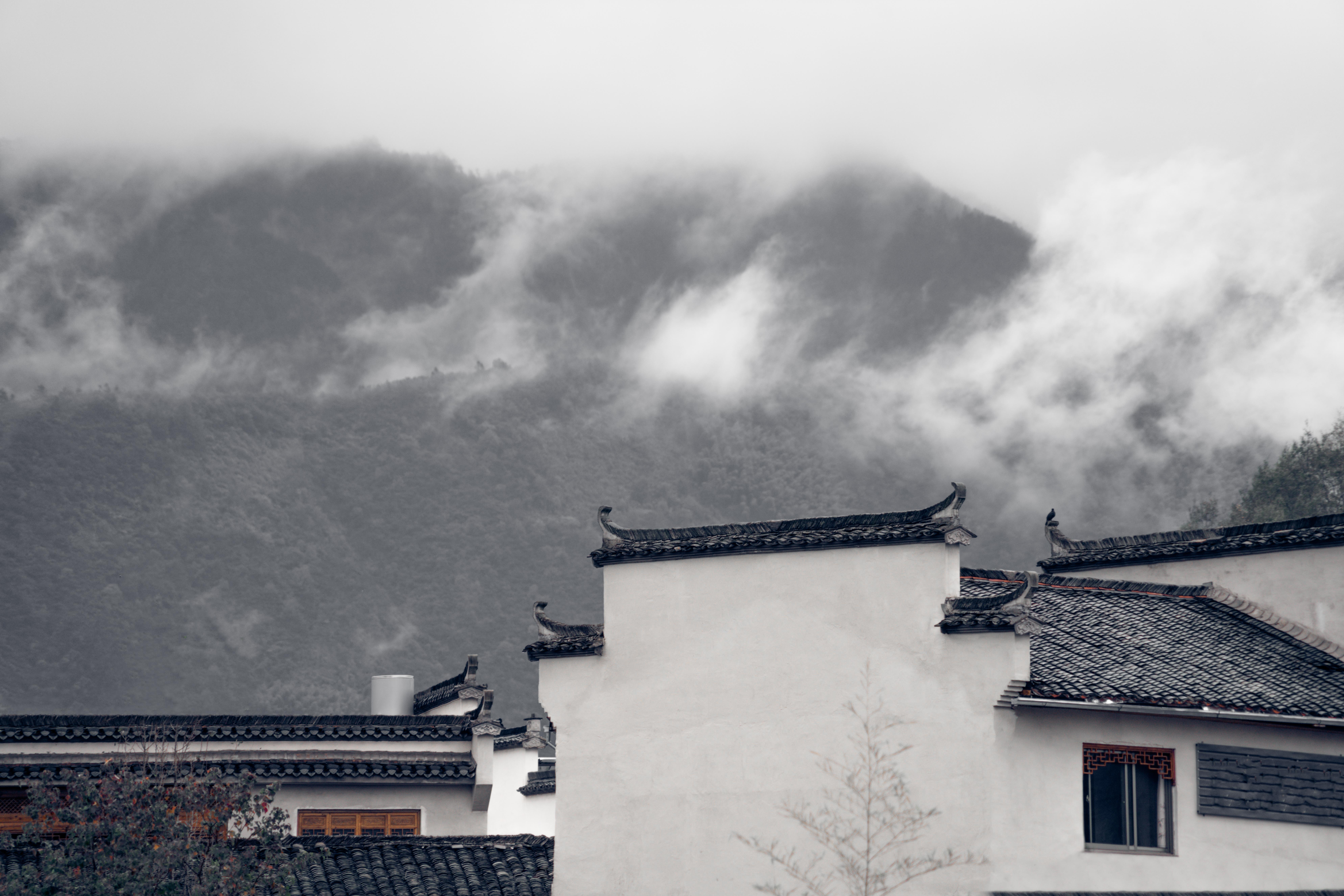
04 Bronze inscriptions of the Shang Dynasty
Bronze inscriptions, also known as bronze inscriptions, or Zhong Dingwen, refer to the characters cast and engraved on bronze wares of the Yin and Zhou dynasties. Before the Zhou Dynasty, copper was called gold, so the inscriptions on the bronze wares were called "Jinwen" or "Jinwen". The earliest oracle bone inscriptions disappeared with the fall of Yin, replaced by Jin inscriptions, and became the mainstream of calligraphy in the Zhou Dynasty. Because a large number of them were cast and carved on bells and tripods, later generations also called them "Zhong Ding Wen". According to investigations, bronze inscriptions similar to pictures were engraved on the bronze wares of the Shang Dynasty, and then continued to evolve. By the end of the Shang Dynasty, the bronze inscriptions were consistent with oracle bone inscriptions. Bronze inscriptions reached their peak in the Zhou Dynasty and continued to the Qin and Han Dynasties. The application of bronze inscriptions lasted from the early Shang Dynasty to the Qin Dynasty's destruction of the six kingdoms, about 1,200 years. The number of characters in the bronze inscriptions, according to Rong Geng's "Jin Wen Bian", is a total of 3,722 characters, of which 2,420 are recognizable characters, slightly more than the oracle bone inscriptions. Bronze inscriptions are inherited from oracle bone inscriptions, and they are inspired by small seal script in the Qin Dynasty. Most of the handwriting is engraved on bells and tripods. Therefore, the original writing is generally better preserved than oracle bone inscriptions, and it has a simple style.
Discovery and Types of Shang Dynasty Bronze Wares
In the Han Dynasty, bronzes from the Shang and Zhou dynasties had already been unearthed. [19] "Han Shu Wu Di Ji" records that in the first year of the Yuan Ding of Emperor Wu of the Han Dynasty, it was "on the Fenshui River", and in June of the fifth year, it was "next to the Tu Temple after the Debao Ding". "Book of the Later Han Dynasty Ming Emperor Ji" records that in the sixth year of Emperor Yongping of the Eastern Han Dynasty, "Wang Luoshan produced a treasured tripod". Xu Shen in the Eastern Han Dynasty mentioned in the preface to "Shuowen Jiezi": "The prefectures often get Dingyi from the mountains and rivers, and their inscriptions are the ancient characters of the previous generation." These bronze wares should be bronze wares from the Shang and Zhou Dynasties. People in the Han Dynasty also used the unearthed Shang and Zhou bronzes as burial objects after death. For example, in October 1964, a bronze bottle from the late Shang Dynasty was found in the mid-Western Han tomb in Laofushan, Nanchang, Jiangxi; Tomb No. 4 of the Han Dynasty in Shandong unearthed a bronze jue and a bronze gong from the late Shang Dynasty. With the frequent occurrence of bronze wares, some people began to interpret and study the inscriptions on bronze wares. It is recorded in "Hanshu·Jiaosi Zhixia":
At that time, Meiyang got the tripod and presented it, and there were ministers discussing it, and most of them thought it was appropriate to recommend it to see the ancestral temple, as in the story of Yuan Ding. Zhang Chang is good at ancient characters, and according to the Ding Mingle, he proposed: "I heard that Zhou Zu was born in Houji, Houji was granted in Lai, Gong Liu made his fortune in Bin, Taiwang founded his country in Qiliang, and civil and military prospered in Fenghao. From this In other words, the old residence of Zhou between Fenggao and Fenggao in Qiliang should have a sacrificial place in the mandala of the ancestral temple. The current tripod comes from Qidong. Carve the sword. The corpse minister bowed to the hand and Jishou said: "If you dare to face the emperor, you will die." The ministers are not enough to trace the ancient texts, and they stole it from the biography. , Zang is also in the palace temple. In the past, the Baoding tripod came out of Fenchen. The governor of Hedong heard about it and ordered: "I patrol the land to sacrifice to the land, and pray for the people to have a good harvest. Today, the apology has not been reported. How can the tripod come out?" "Bo asked the elders, what is the old Zang? Sincerely want to find out the facts. There is a division inspecting the Shangfei old Zang. The tripod is eight feet one inch in size and three feet six inches in height, which is different from other tripods. Today this tripod is small and has another Inscriptions are not recommended to be seen in the ancestral temple." Zhi said: "Jingzhao Yin agrees."
This document records the historical events of the Eastern Han Dynasty. Judging from the content, bronze vessels of the Zhou Dynasty were unearthed in the Eastern Han Dynasty, and Zhang Chang also recognized the characters in them. However, generally speaking, between the Han and Tang Dynasties, not many bronzes were unearthed, and even fewer of them had inscriptions.
In the Song Dynasty, the emperor was particularly fond of ancient bronzes. Under its influence, some dignitaries and wealthy intellectuals also rushed to buy bronze wares, or appreciate them as playthings, or study them as ancient writing materials. This also formed the wind of tomb robbery. There are not a few Shang and Zhou bronzes unearthed during this period.
Most Shang Dynasty bronzes were unearthed in the 20th century.
In 1928, the Institute of History and Linguistics of the Academia Sinica was established, and until the outbreak of the Anti-Japanese War in 1937, the Institute of History and Linguistics carried out large-scale archaeological excavations in the Yinxu area. Fifteen times, more than 170 bronze wares were discovered. Among them, the more famous ones are large heavy vessels such as Niu Ding and Lu Ding. The Simuwu Dafang Ding unearthed by local farmers in Anyang, Henan Province in 1939 in Xiaoyingxidi is a treasure among Chinese bronzes.

Book "Jinshilu" edited by Song Dynasty Zhao Mingcheng
In 1950, the excavation of Yin Ruins resumed. The main cemetery in the west area of Yinxu was excavated from 1969 to 1977. At that time, a total of 939 Shang tombs, 175 bronze vessels and 43 bronze vessels with inscriptions were unearthed. Since these tombs are scientific excavations, they have reliable underlying evidence and a clear place of excavation, which are very helpful for the study of the stages and dates of Shang bronzes.

Ding
In the 1970s, archaeologists excavated many cemeteries in Anyang area, cleaned up more than 2,000 tombs, and discovered many bronze inscriptions with research value. For example, the set of sleeping seals unearthed in the south of Dasikong Village in 1986 is very helpful for studying the clan names of the Shang Dynasty; and the inscription of the Yayuding has 21 characters, which is very helpful for studying the sacrificial system of the Shang Dynasty.
The Yin Ruins Fuhao Tomb was one of the most important archaeological discoveries in the 1970s. The tomb of Fuhao is the tomb of Fuhao, wife of King Wuding of Shang Dynasty. It is currently the only tomb of the Shang royal family that can be verified with the inscriptions of the Yin Ruins and the identity of the owner of the tomb can be confirmed. A total of 468 bronze wares and 210 sacrificial vessels were unearthed from Fuhao's tomb, as well as many musical instruments, weapons and living utensils, etc. Many of the bronze vessels have inscriptions.
After 1959, the Shusizi Ding unearthed from the Gangyuan Sacrifice Pit has an inscription of three lines and three crosses, which is the most scientifically excavated bronze inscription of the Shang Dynasty so far. It is an important material for studying the sacrificial system of ancestral temples in the late Shang Dynasty.
Two hundred and ninety-one bronze vessels were unearthed from Tomb No. 160 in the west of Guojiazhuang in the Yin Ruins, including thirty-eight pieces of ritual and musical instruments with inscriptions. These inscriptions are of great significance to the staging and dating of the bronze inscriptions of the Shang Dynasty.
In the 20th century, many bronze wares from the Shang Dynasty were also unearthed outside the Yin Ruins.
In 1979, tombs from the Shang and Zhou dynasties were discovered in Tianhu Village, Manzhang Township, Luoshan County, south of the Huaihe River in southern Henan. After two excavations, a total of 42 tombs were cleared, of which 22 were Shang tombs. A total of 219 bronze vessels were unearthed from these Shang tombs, of which 83 were ritual vessels, and 40 pieces had inscriptions.
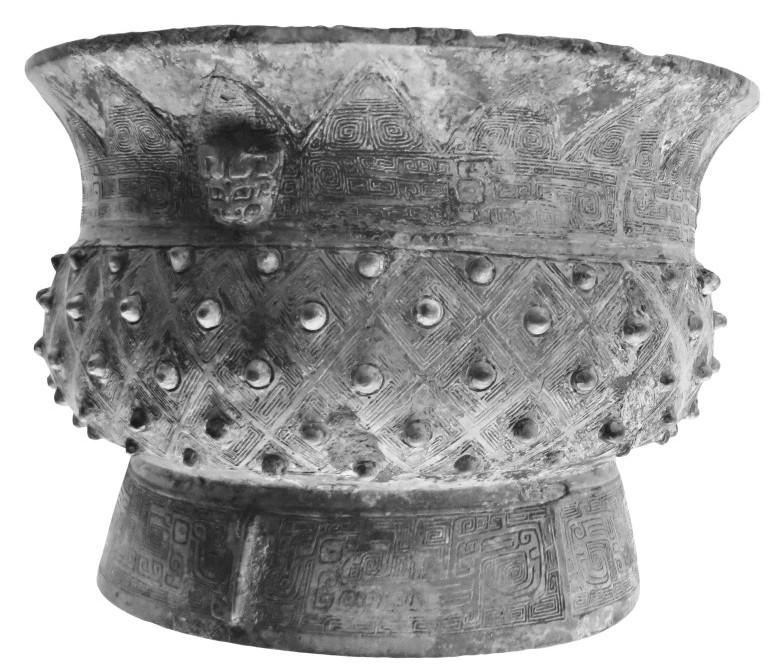
gui
The eldest son's tomb excavated in 1997 is a large Chinese-shaped tomb with two passages in the north and south. Seventy-nine bronze containers and six musical instruments were unearthed, some of which were square. It shows that the owner of the tomb has a high political status. Various inscriptions such as "Ge", "Zi", "Zikou" and "Changzikou" appeared in the inscriptions on bronze wares. According to relevant inscription materials, "Chang" may be a very important clan in the Shang Dynasty.
In the early 1970s, archaeologists discovered two storage pits in Beidong Village, Kazuo County, Liaoning Province, and unearthed a batch of bronzes from the Yin and Shang Dynasties. This batch of artifacts triggered scholars' research on Guzhu Kingdom, and then paid attention to the geographical issues in the northern part of the Shang Dynasty.
The types of bronze wares in the Shang Dynasty include food utensils, wine utensils, water utensils, musical instruments, weapons, and miscellaneous utensils.
Food utensils include tripod, gui, 甗, 鬲, bean and dagger. Ding is the main food vessel among bronze ritual vessels. It has many uses such as cooking meat, offering sacrifices and enjoying swallows. Gui is a utensil for holding cooked meals such as millet, millet, rice, and grain. Zong is a rice steamer. Li is a porridge cooker. Bean is a container specially prepared for pickles, meat sauce and other condiments, and it is also a ritual vessel. A dagger is a spoon for picking up food.
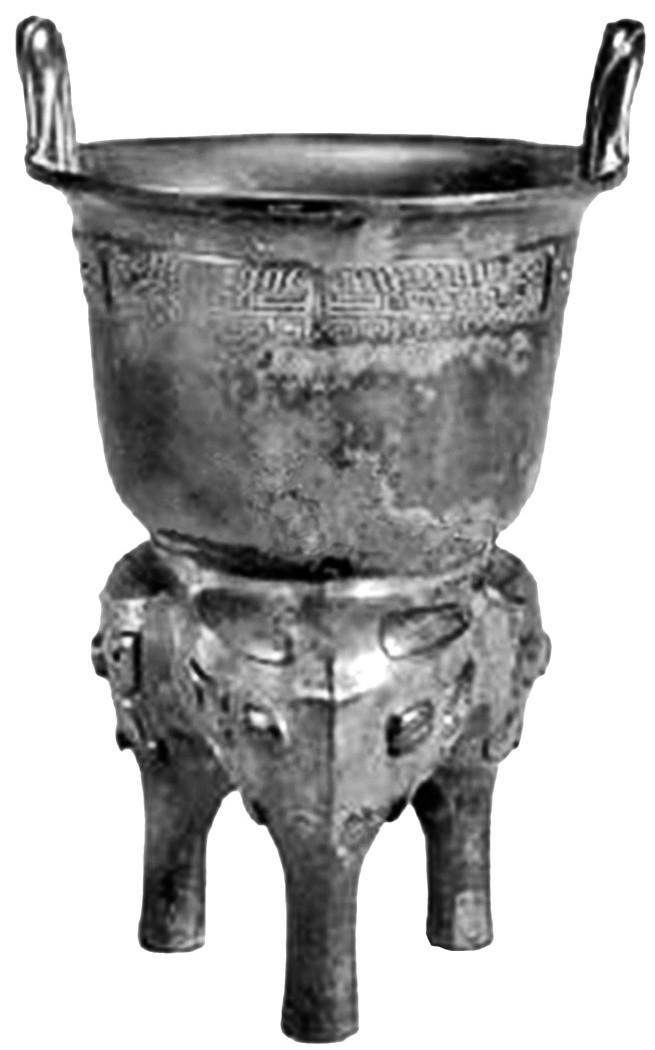
甗
Wine vessels include Jue, Jiao, Jue, Zun, Gong, Fang Yi, You, Ge, Bu, Jug, Gou, Gou, Spoon, and Yu. Jue is a drinking vessel, but also a ritual vessel. The horn is also a drinking vessel. "Book of Rites Ritual Vessel": "In the sacrifice of the ancestral temple, the venerable lifts the goblet, and the humble lifts the horn." Gu is a vessel for holding wine and performing naked rituals, and it can also warm the wine. Zun is a large or medium-sized wine container with a high body. Gong is also a container for wine. Fang Yi is also a wine container. You are sacrificial utensils specially used to hold 駬鬯. The 罍 is a large wine container. Ampoule is a wine container with a big belly. The jug is also a cup for drinking. Gou, drinking utensil, "Shuowen": "Gu, the noble of drinking in the country." Gou, the cup of drinking, "Shuowen": "Gou, the corner of drinking in the township." It is a flat body, and the other is a round body. Spoon, "Shuowen": "Shooting is also used, so it is also picked." It is actually a vessel for taking wine pulp.盉, Wang Guowei said: "The wine in the honored place is blended with the mysterious wine, and it is poured into the jue."
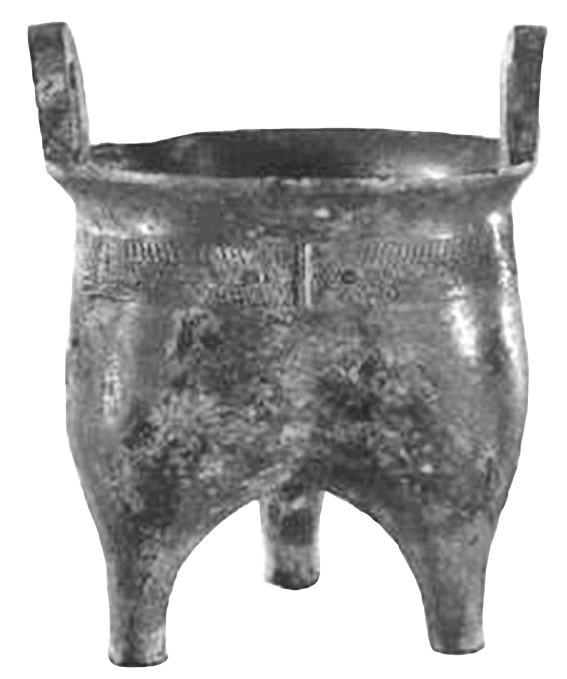
鬲
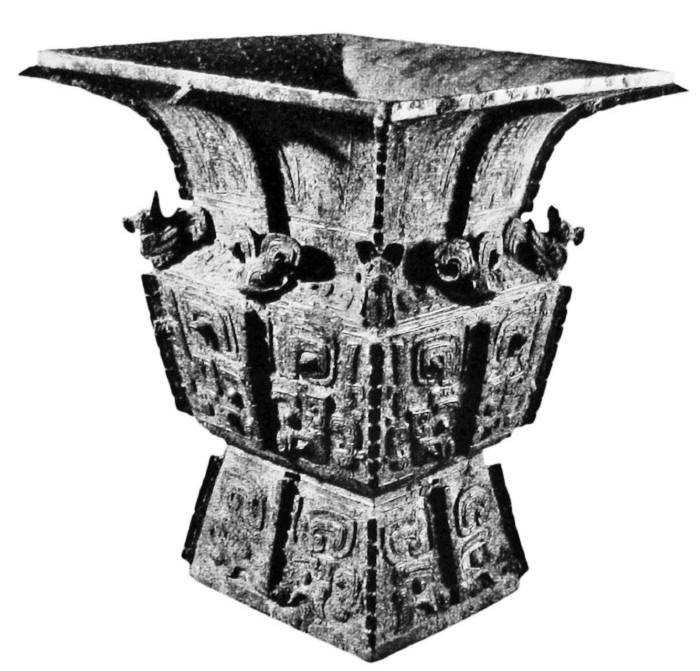
Respect
The water vessel includes a pan and a bowl. The plate is a water container. When washing, use a 匜 to pour water into your hands, and use the plate to receive the discarded water. Yu is a large rice container that can also hold water and ice. It usually has a wide mouth, a deep abdomen and a ring foot, with animal ears or attached ears.
Musical instruments include cymbals and bells.铙 is one of the earliest bronze percussion instruments used in my country, also known as gong or zhizhong, which was popular in the late Shang Dynasty. The bell is an early bronze musical instrument in my country; however, it was rare in the Shang Dynasty, and the characteristics of the times are not very obvious.
Weapons include Ge, Yue, Spear, and Saber. Ge is a relatively common weapon in the Shang and Zhou dynasties. It was called Gou Bing in ancient times, and it was a weapon used to kill with hooks. Yue, Zheng Xuan's note in "Shangshu Gu Ming": "Big axe", it is a weapon with the nature of a scepter. The spear is a weapon used for sprinting. The body of the spear is divided into two parts: the blade and the pastern, and the front is divided into the forward and the two wings. Knife is a weapon used to chop and kill enemies, and knives often appear in ruins in the late Shang Dynasty.
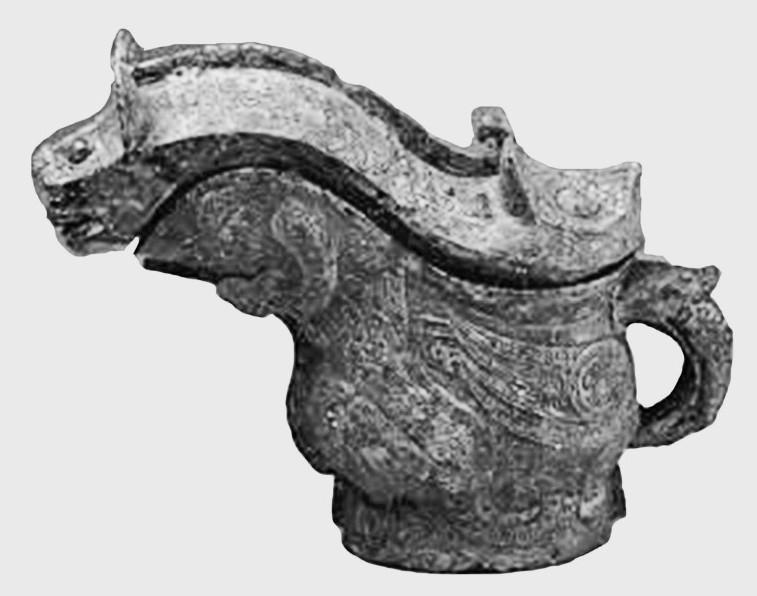
Gong
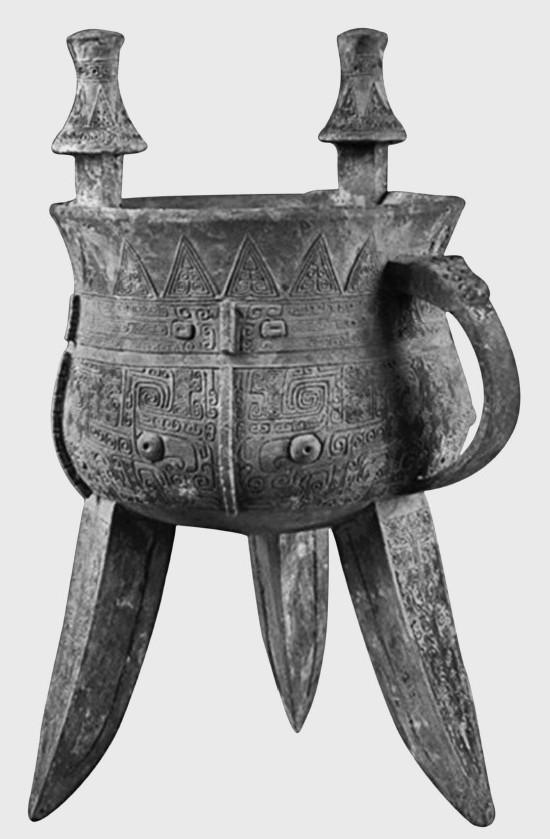
斝

Grand
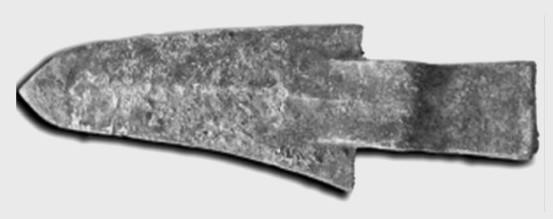
Ge

knife
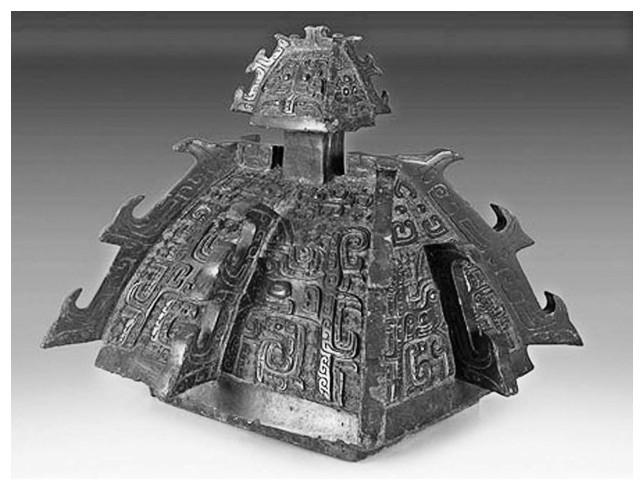
San Tianquan square 罍 (léi), cast in the late Shang Dynasty, belongs to the category of wine containers, and was obtained because the inscription on the mouth of the container reads "San Tianquan is the father and respects Yi" Known as the "King of Fangzhen". The device was discovered in 1922, the cover was preserved by the Hunan Provincial Museum in 1956, and the body of the device has been exported abroad. Returned to Changsha, China on June 14, 2014.
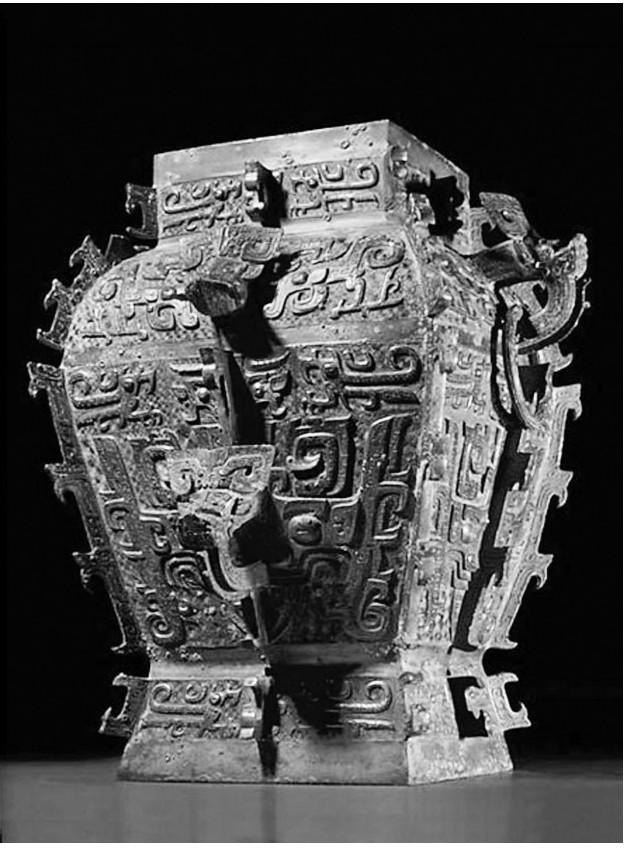
Miscellaneous utensils include square utensils, jars, and adzes. Some people think that square utensils are "ice mirrors", which are used to store ice to preserve food; some people think that they are "lu-shaped utensils", which are utensils used for cooking or holding food. Jar, "Ji Yun": "Drainer." Adze is a tool used to chop wood and make the surface of wood smooth.
Staging and Description of Shang Dynasty Bronze Inscriptions
Around the middle of the Shang Dynasty, characters began to appear on bronze wares. At the beginning, these inscriptions had a small number of words, and most of them were clan names or private names of the authors. In the late Shang Dynasty, especially during the period from Pan Geng to Emperor Xin, longer inscriptions on events began to appear. [20]
According to the research of scholars, Yin Ruins bronzes can be roughly divided into four periods. The first phase dates from Pan Geng's move to Yin to the early days of Wu Ding. No inscriptions have yet appeared on bronzes from this period. The second period is from the late Wuding period to the Zujia period. Inscriptions have generally appeared on the bronzes of this period, and bronzes with inscriptions have been found in various archaeological remains. The inscriptions are relatively mature, and some are artistic. In addition, inscriptions appeared on the few jade and bone-horn wares unearthed in this period, and there are rare records in Zhu Shu Yu Ge, which shows that writing has been widely used in this period. The third period, from Linxin to Wending period. Most of the practical ritual vessels of this period were cast with inscriptions. Generally speaking, two or three characters are the most common inscriptions, including family emblems, personal names, day names (names are called by days), family emblems, Yaga clan names, and country names, etc. Ming vessels generally do not have inscriptions. The fourth period, the period of Emperor Yi Di Xin. The number of inscriptions in this period increased, and the content was richer than before. Among the bronze wares handed down from generation to generation, there are about forty inscribed bronze wares belonging to the Emperor Yi and Emperor Xin periods, some of which are noteworthy inscriptions, the longest of which reaches forty-six characters. Generally speaking, the bronze inscriptions of this period have made new progress in terms of word count, notes, and calligraphy. Such a staging of bronze wares is also of great benefit to understanding the bronze inscriptions of the Shang Dynasty.
The more important bibliographical books on bronze inscriptions of the Shang Dynasty are:

Book shadow of "Qi Gu Shi Ji Jin Wen Shu"
(1) "Qi Gu Shi Ji Jin Wen Shu", a total of 20 volumes, compiled by Liu Xinyuan, lithographed in 1902. A total of 575 pieces of Shang and Zhou bronzes were collected, as well as Qin and Han bronzes, coins, and bronze mirrors. This book is accompanied by textual research.
(2) "Yin Wencun", a total of three volumes, compiled by Luo Zhenyu, lithographed in 1917. There are 755 pieces of bronze wares included, but most of them are bronze wares from the Western Zhou Dynasty.
(3) "Ming Zhai Ji Gu Lu", a total of 26 volumes, compiled by Wu Dacheng, lithographed in 1918. A collection of 1,048 Shang and Zhou bronze inscriptions. This book is excellent in printing, with occasional textual research and interpretation, and is an important bibliography of Shang and Zhou bronze inscriptions.

Book video of "Ming Zhai Ji Gu Lu"
(4) "Ji Jin Wen Lu", a total of four volumes, compiled by Wu Kaisheng, published in 1933. A total of 414 bronze inscriptions from Shang, Zhou, Qin and Han Dynasties were collected. The book is accompanied by an explanation and a short description.
(5) "Xiaoxiao Jinge Jinshi Rubbings", a total of 18 volumes, compiled by Liu Tizhi, lithographed in 1935. A total of 6,456 bronze inscriptions of the Shang, Zhou, Qin and Han Dynasties were collected. All are accompanied by explanations, but some of them are fakes.
(6) "Three Dynasties Jijin Wencun", a total of 20 volumes, compiled by Luo Zhenyu, photocopied in 1937. Collected 4,831 pieces of Shang, Zhou, Qin and Han bronze wares, mainly Shang and Zhou wares. This book is well-printed and is an important reference book for studying the bronze inscriptions of the Shang Dynasty. Unfortunately, there is no translation for this book.
(7) "Records of Shang and Zhou Bronze Inscriptions", a total of one volume, edited by Yu Shengwu and published by Science Press in 1957. Contains 616 rubbings of Shang and Zhou bronze inscriptions. This book mainly collects the newly discovered bronze inscriptions after the publication of "Three Dynasties Jijin Wencun" and the handed down bronze inscriptions that were not included in the book "Three Dynasties".
(8) Collected Works of Shang and Zhou Dynasties, edited by Xu Zhongshu, published by Sichuan People's Publishing House in 1984. This book contains 973 bronze inscriptions published in China from the founding of the People's Republic of China to the end of 1980. These inscriptions are arranged according to the area where they were found, and each artifact is accompanied by an explanation and a simple description of the source of the data.
(9) "The Collected Collection of Bronze Inscriptions", a total of nine volumes, edited by Yan Yiping and published by the Taipei Arts and Culture Press. A total of 7,228 inscriptions were collected. Each inscription is marked with a brief description, a brief description and a diagram of the shape of the vessel.
(10) "Collection of Yin and Zhou Bronze Inscriptions", a total of eighteen volumes. Compiled by the Institute of Archaeology, Chinese Academy of Social Sciences, published by Zhonghua Book Company from 1984 to 1994. The inscriptions were collected until 1988, and a total of 11,983 rubbings of inscriptions were collected. After each volume, there are descriptions of the number of inscriptions, time, description, unearthed conditions, etc. It is a masterpiece of Shang Dynasty bronze inscriptions.
(11) "Selected Inscriptions on Bronze Wares of the Shang and Zhou Dynasties", this book has four volumes, edited by Ma Chengyuan, edited by Chen Peifen, Pan Jianming, Chen Jianmin, and Pu Maozuo, published by Cultural Relics Publishing House in 1988. It contains a total of twenty-one merchants, and the collection time ends in 1979. It is the best anthology of Yin Shang Jinwen known so far. [21]
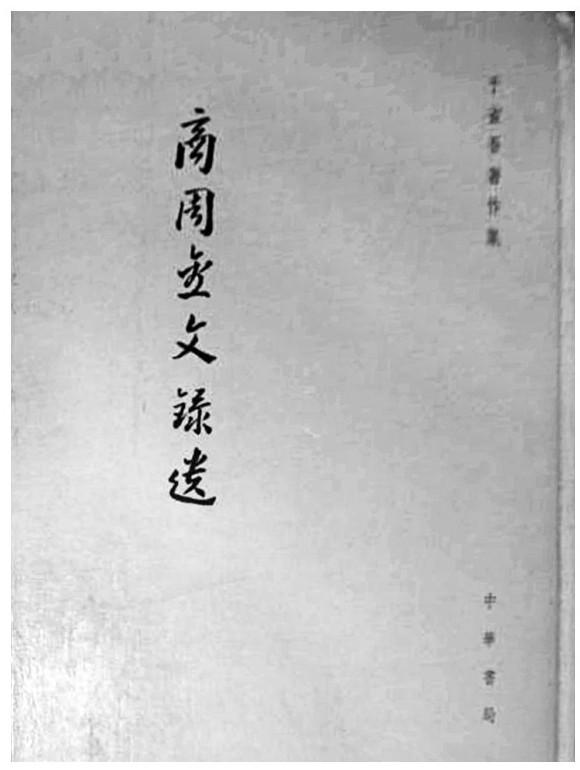
Book Shadow of "Shang and Zhou Bronze Inscriptions"

"Bronze Inscription Collection" book shadow
(12) "Bronze Inscriptions of Shang and Zhou Dynasties", written by Wang Hui, published by Cultural Relics Publishing House in 2006. A total of four business utensils are included. It is a very good introductory book for learning the bronze inscriptions of the Shang Dynasty.
(13) "Collection of Chinese Yin and Zhou Bronze Wares Looted by American Imperialists", edited by Chen Mengjia, published by Science Press in 1963. Chen Mengjia once taught in the United States. During this period, he inspected the bronzes collected by American museums, universities, and collectors. This book is a record of the findings. It contains a total of 845 bronze wares, classified and arranged, with inscriptions, dimensions and the origin of the wares. It is a book of high academic value.
(14) "Compilation of Bronze Inscriptions Seen, Extended and Copied in China, Japan, Europe, America, Australia and New Zealand", a total of ten volumes, edited by Noel Barnard and Zhang Guangyu, published by Taiwan Arts and Culture Press in 1980. It contains a total of 1,813 Shang and Zhou bronzes. These utensils are arranged according to the number of inscriptions, from most to least, and the size and description of each utensil are attached, but there are also some false utensils mixed in between.
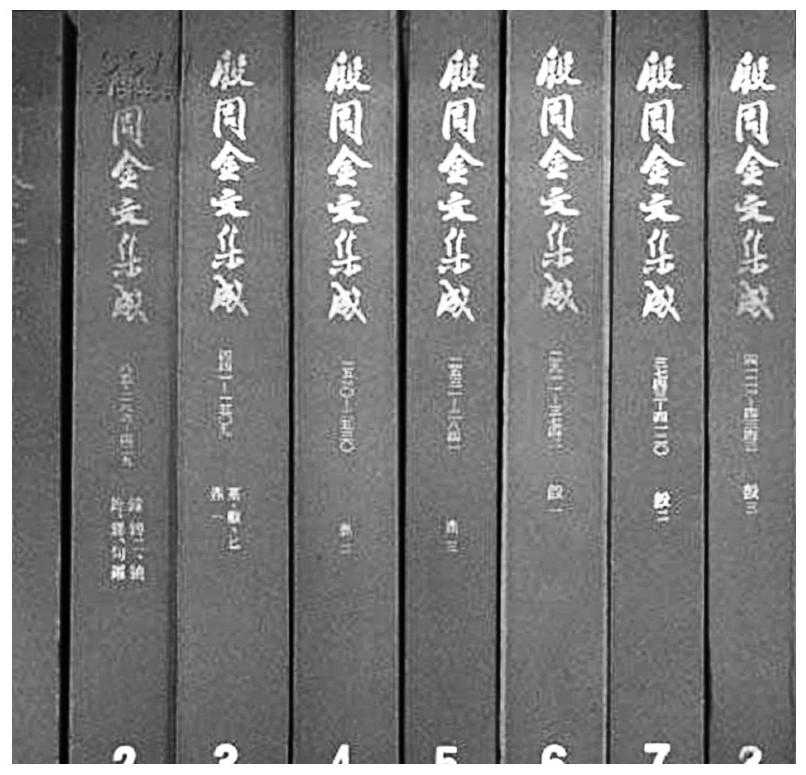
"Yin Zhou Bronze Inscriptions Integration" book shadow
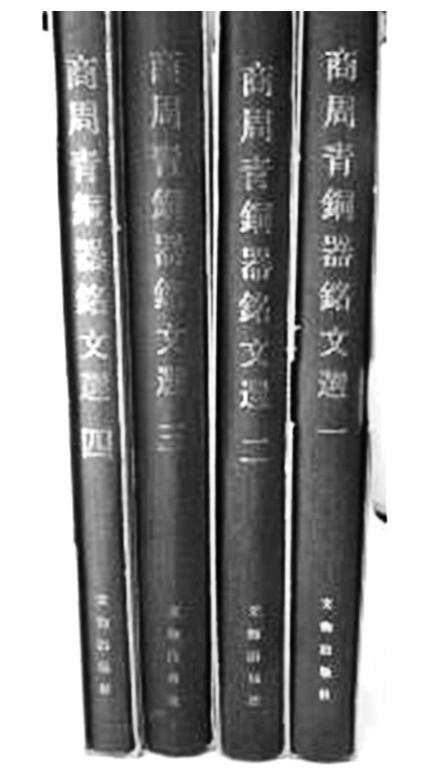
Book shadow of "Selected Inscriptions on Bronze Wares of Shang and Zhou Dynasties"
(15) "Relics of Chinese Bronze Wares in Europe", edited by Li Xueqin and Sarah Allan, published by Cultural Relics Press in 1995. The two authors have visited Belgium, Denmark, France, Germany, the United Kingdom, Italy, the Netherlands, Sweden, Switzerland and other countries, and they have published more than 200 Shang and Zhou bronzes from public and private collections in these countries in this book. Most of these artifacts are high-quality goods and have high academic research value.
(16) "Jin Wen Bian", edited by Rong Geng. Since the book was published in 1925, it has been updated many times, among which the version published by Zhonghua Book Company in 1985 is the most complete. This edition has fourteen volumes, arranged according to the style of "Shuowen Jiezi", containing more than 2,000 known characters, and an appendix two volumes, containing more than 1,200 clan inscriptions and unknown characters. This book also cites more than 3,900 Yi inscriptions unearthed in the past dynasties.
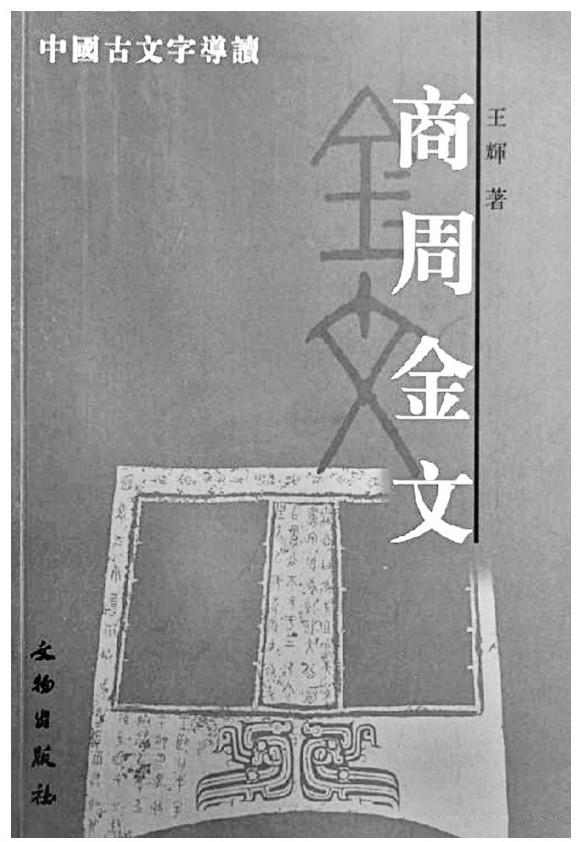
Book Shadow of "Shang and Zhou Bronze Inscriptions"
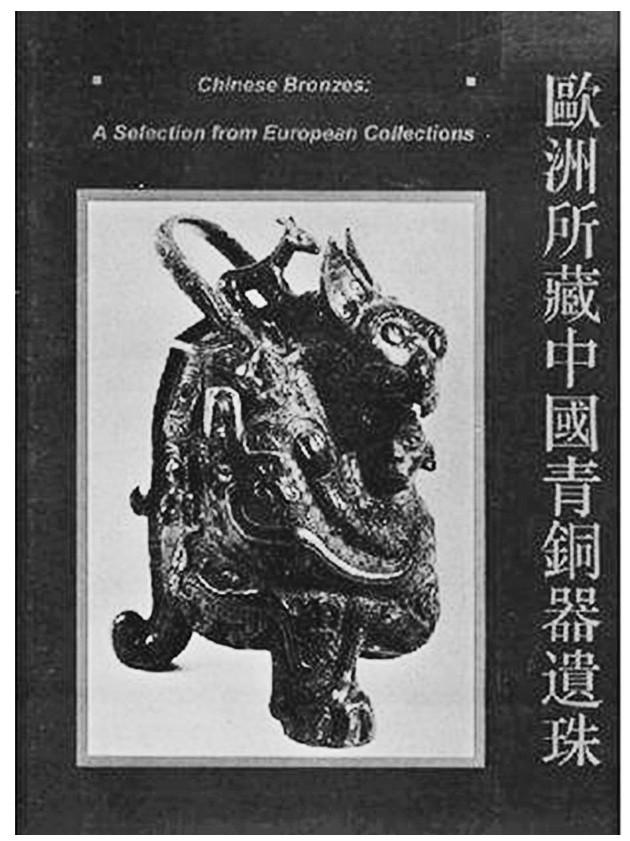
Book video of "Chinese Bronze Beads Collected in Europe"
(17) "A General Examination of Shang and Zhou Yi Artifacts", volume two, written by Rong Geng, printed by Harvard-Yenching Institute in 1941. The whole book is divided into two parts. There are fifteen chapters in the first part of the general theory, and four chapters in the second part. The general part includes: 1. Origin, that is, the origin of bronze ware making; 2. Discoveries, describing important discoveries in various places since the Han Dynasty; 3. Categories, divided into five categories: food vessels, wine vessels, water vessels, miscellaneous vessels and musical instruments; 1. Age, which mainly describes the methods used by various schools to determine the age of bronzes; 5. Inscriptions, the evolution of bronze inscriptions from the Shang Dynasty, Western Zhou Dynasty to the Spring and Autumn Period, and the Warring States Period; , which mainly explains the casting of bronze wares in the Shang Dynasty; eighth, value, which describes the value of some ancient utensils; ninth, rust removal, describes the method of rust removal for bronze wares; 1. Imitation, describing the imitated bronze wares of the Song and Ming dynasties; 12. Identifying counterfeit, recording the method of identifying forged bronze wares; 13. Destroying, recording the losses suffered by bronze wares in the past dynasties; The collection of bronze wares; XV. Description and evaluation of fifty-seven important works on bronze wares since the Song Dynasty. The next chapter details various utensils according to classification. For the first time, this book combines various issues in the study of bronze wares into a scientific and systematic work.
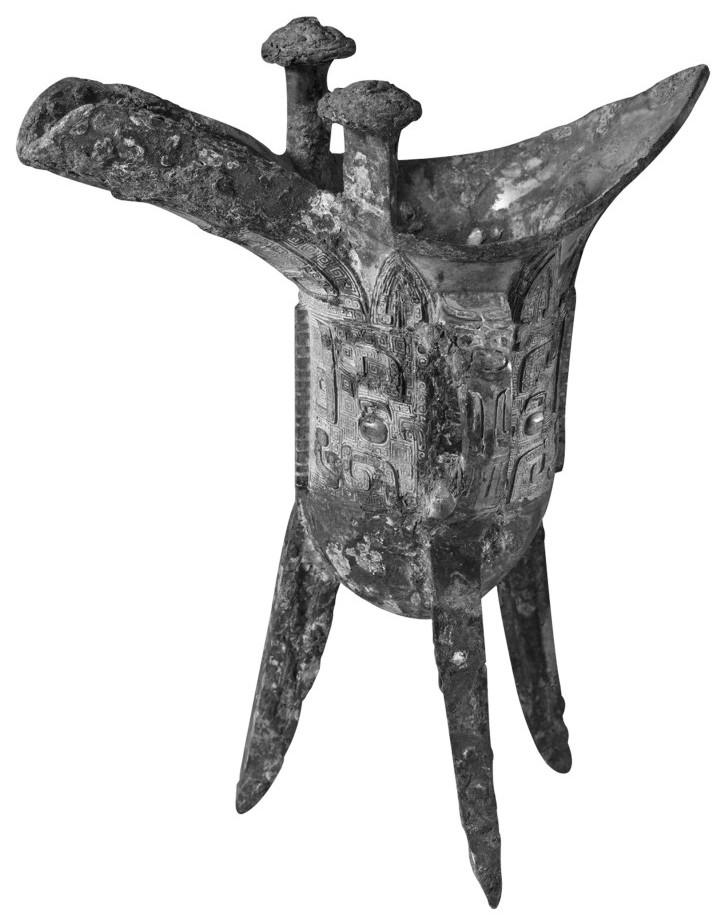
Shang Yaqijue (collected by Shanghai Museum)
(18) "The Tomb of Fuhao at the Yin Ruins", edited by the Anyang Team of the Institute of Archaeology, Chinese Academy of Social Sciences, published by Cultural Relics Press in 1980. Fu Hao's tomb is not large in scale, but the tomb chamber has not been destroyed, and the funerary artifacts are extremely rich and complete. Among them, 468 bronze wares and exquisite jade wares were unearthed. This batch of bronze wares includes more than 200 sacrificial wares in various forms, which is the first time in the excavation history of Yin Ruins. There are nine sets of inscriptions on the bronze vessels in Fuhao's tomb.
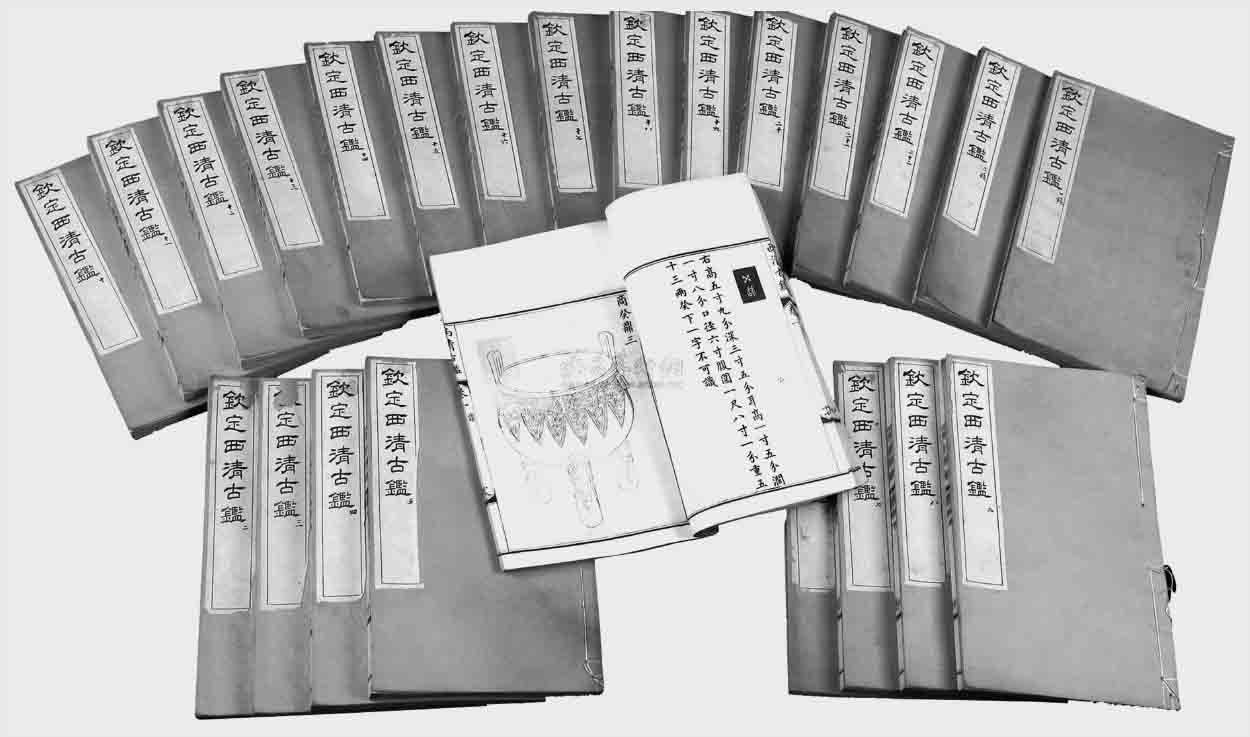
Book Shadow of "Ancient Mirror of the Western Qing Dynasty"
(19) "Shang Zhou Bronze Wares Unearthed in Shaanxi", four volumes, edited by Shaanxi Provincial Institute of Archeology, Shaanxi Provincial Cultural Relics Management Committee, Shaanxi Provincial Museum, published by Cultural Relics Publishing House in 1979. Among them, the first volume records the bronze wares of the Shang Dynasty unearthed from all over Shaanxi Province and the bronze wares of the Western Zhou Dynasty unearthed in Qishan County, and contains a total of 207 wares.
(20) "Shang and Zhou Bronze Wares Unearthed in Henan", one volume, edited by the editing group of Shang and Zhou bronze wares unearthed in Henan, published by Cultural Relics Publishing House in 1981. This book collects Shang and Zhou bronzes unearthed from Shang and Zhou tombs and cellars since the founding of New China, including Erlitou in Yanshi, Henan, Baijiazhuang in Zhengzhou, Minggong Road, Yinxu in Anyang, and Liuli Pavilion in Huixian County. Seven pieces. Each artifact has a brief description, which records the time, place, pattern, inscription and shape characteristics of the artifact unearthed.
(21) "Recognition of Inscriptions on Zhongding and Yi Ware in the Past Dynasties", 20 volumes, compiled by Xue Shanggong of Song Dynasty, the earliest edition was printed in the 14th year of Shaoxing in Song Dynasty (1144). In the 16th year of Wanli in the Ming Dynasty (1588), there was a Zhuyin version. After that, it was printed many times during Chongzhen, Jiaqing and Guangxu years. This book contains two artifacts from the Xia Dynasty, 209 artifacts from the Shang Dynasty, 253 artifacts from the Zhou Dynasty, five artifacts from the Qin Dynasty, and 42 artifacts from the Han Dynasty, totaling 511 pieces. This book only imitates the inscriptions, and then lists the explanations and textual research. Nine out of ten inscribed utensils produced in the Song Dynasty are included in this book.
(22) "Ancient Mirror of the Western Qing Dynasty", forty volumes, compiled by Liang Shizheng and others in the Qing Dynasty. A photocopy of the bronze plate of Maisong Library in the 14th year of Guangxu (1888). This book is very well drawn, but the inscriptions have been reduced and distorted, and the insights from the inscriptions are limited. A total of 1,436 bronzes and 93 mirrors were collected, but there are many fake ones. The publication of this book is inseparable from the development of epigraphy in the Qing Dynasty.
(23) "Jigu Zhai Zhong Ding Yi Ware Inscriptions", ten volumes, edited by Ruan Yuan, block edition in the ninth year of Jiaqing (1804), reprinted several times in Guangxu year. Ruan Yuan wanted to use this book as a continuation of Xue Shanggong's "Recognition of Inscriptions on Zhongding and Yi Ware in the Past Dynasties". This book contains 446 Shang and Zhou bronze wares, five Qin wares, and 550 Han and Jin wares. There are detailed research and explanations. In front of the book, there are two papers, "Shang and Zhou Bronze Artifacts" and "Shang and Zhou Weapons". It is an influential bronze work in the late Qing Dynasty.
The form of Shang Dynasty bronze inscriptions and some typical inscriptions
The most common forms of Shang bronze inscriptions are:
First, the inscriptions only have the so-called clan inscriptions, that is, the name of the family, which is used to indicate the ownership of the artifacts. Some of them belong to the so-called compound clan name, in which the name of the higher-level family to which the family belongs is also signed at the same time as the family name, thus showing a genealogical relationship of a clan organization. This ethnic inscription is also often combined with a sub-graph, either inside or outside the sub-graph. For the meaning of the sub-graph, the current researchers still have different opinions.
Second, in addition to the clan name, there is also the "day" name of the deceased ancestor of the family engraved at the same time: the ten stems, namely A, B, C, D, E, Ji, G, Xin, Ren, and Gui, are connected to the relatives. After being called "ancestor", "father", "concubine", "mother" and so on. This shows that this kind of utensil is a sacrificial utensil specially used by the nobles of the family to worship the ancestors with this "day" name.
Third, the inscriptions only have day names.
Fourth, the inscription only has the name of the author. Since the personal name of the head of the family is often used as the name of the family, although this form of inscription may only be the personal name of the author, but some (such as "Zi Mou") may also be the name of a family. Number.
The bronze inscriptions of the Shang Dynasty have distinctive features, which are manifested in the following aspects: (1) The characters representing the human body, animals, plants, and utensils have a strong pictographic meaning in the shape of the characters. This kind of font does not mean that the characters at this time are still in the primitive stage, but a means of beautification and a solemn expression. (2) Most of the strokes are thick and thick, with sharp edges from the beginning to the end, and there are many waves at the turning points. (3) The font size is not uniform, and the layout of the inscriptions is not neat. Although the vertical lines are basically in columns, the horizontal lines are not horizontal. A few inscriptions have even strokes and thin strokes, but this style is rare in Shang and Jin inscriptions.
In the late Shang Dynasty, some long inscriptions began to appear. Here, we introduce a few typical inscribed bronzes, so as to get a glimpse of the general situation of the Shang Dynasty bronze inscriptions.
Xiaochen Fou Fangding. It is a very important late Shang bronze. Originally collected by the Qing Palace, it was originally in the Summer Palace and is now in the Beijing Palace Museum. Its inscription reads:
Wang Yi (given) Xiaochen Fou was responsible (accumulated) for five years, and Fou used Zha (as) to enjoy the honor of the elder son Yi's family. . Father B. ("Integration" 2653)
. Father B. ("Integration" 2653)
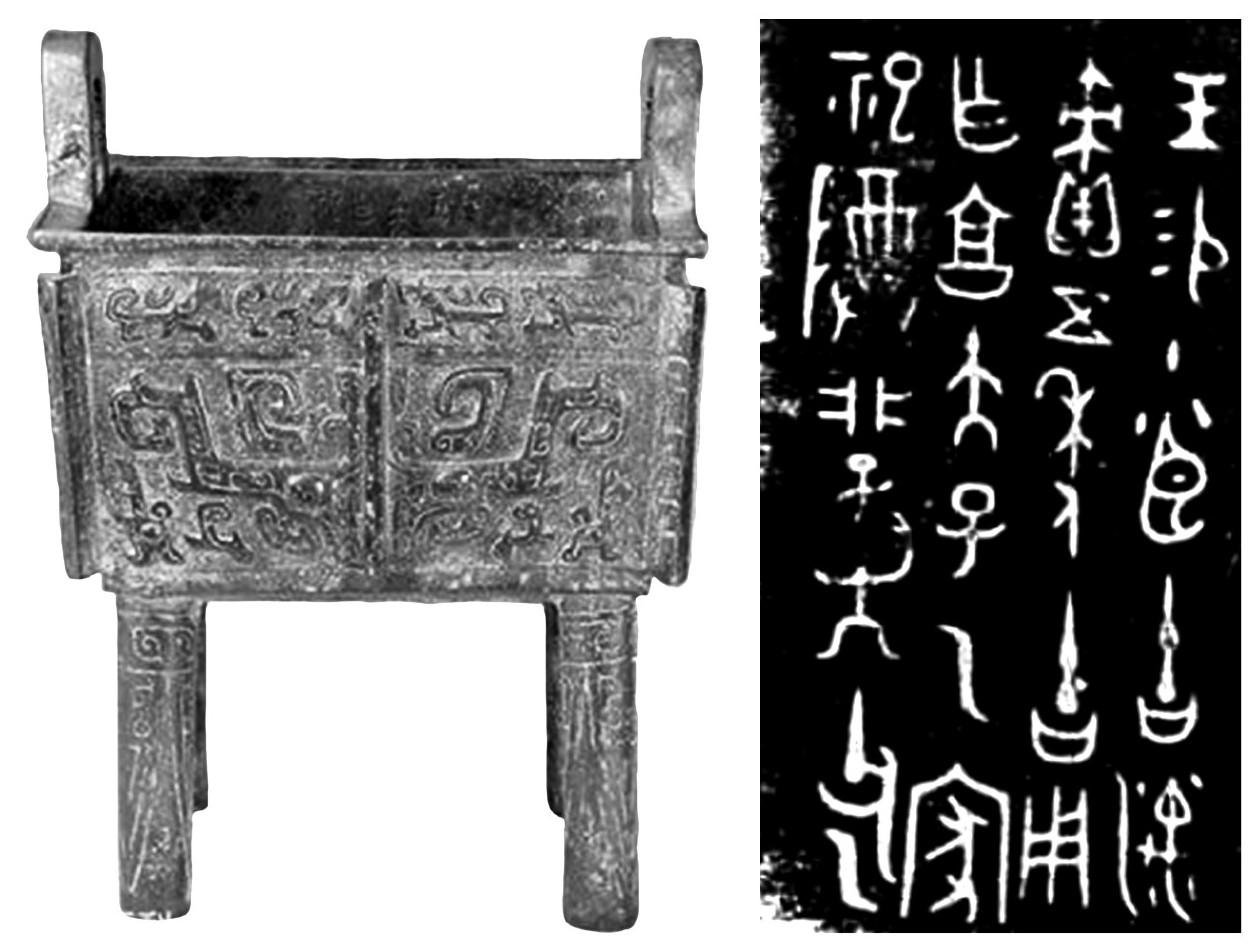
Xiaochen Fou Fangding and its inscription
The general meaning of the inscription is: The king of Shang rewarded the little minister Fou with five years of land savings, and the little minister made a statue to sacrifice to Prince Yi.
Shu Si Ding. It was unearthed in a round burial pit of the Yin Dynasty in Hougang, Anyang in 1959, and is housed in the Anyang Workstation of the Institute of Archaeology, Chinese Academy of Social Sciences. This is a late Shang artifact. Its inscription reads:
Bingwu, Wang Shang (reward) garrison (Heir) Bei Ernpeng, only (in) Lanzong. Use first (as) father Guibao (
(Heir) Bei Ernpeng, only (in) Lanzong. Use first (as) father Guibao ( ). only king
). only king It's only (in) September in the big room. Dogfish. ("Integration" 2708)
It's only (in) September in the big room. Dogfish. ("Integration" 2708)
Shu in the inscription is the name of the official; Si is the name of the family; Shusi is the official from the clan; That is, tripod, dog fish is the name of the clan. The main meaning of the inscription is: On Bingwu Day, the king of Shang rewarded the 20 friends of the garrison officials from the heir clan at the ancestral temple in Langdi; the heir made a tripod for his father Gui; big room held
That is, tripod, dog fish is the name of the clan. The main meaning of the inscription is: On Bingwu Day, the king of Shang rewarded the 20 friends of the garrison officials from the heir clan at the ancestral temple in Langdi; the heir made a tripod for his father Gui; big room held sacrifice. Shusi comes from the dog fish family. This inscription is an important historical material reflecting the sacrificial situation in the Shang Dynasty.
sacrifice. Shusi comes from the dog fish family. This inscription is an important historical material reflecting the sacrificial situation in the Shang Dynasty.
Minister Yu Xizun. Unearthed in Liangshan, Shouzhang County, Shandong Province during the Daoguang period of the Qing Dynasty, it is now in the collection of the Asian Art Museum in San Francisco, USA. It is an artifact from the late Shang Dynasty. Its inscription reads:
Ding Zi (Si), Wang Xingxuan (Yong), Wang Yi (given) Yu Kuibei, a small minister. Only the king came to Zheng (conquer) people (Yi) side. Only the king sacrifices ten times and five times, and the sun is day. ("Integration" 5990)
(Yong), Wang Yi (given) Yu Kuibei, a small minister. Only the king came to Zheng (conquer) people (Yi) side. Only the king sacrifices ten times and five times, and the sun is day. ("Integration" 5990)
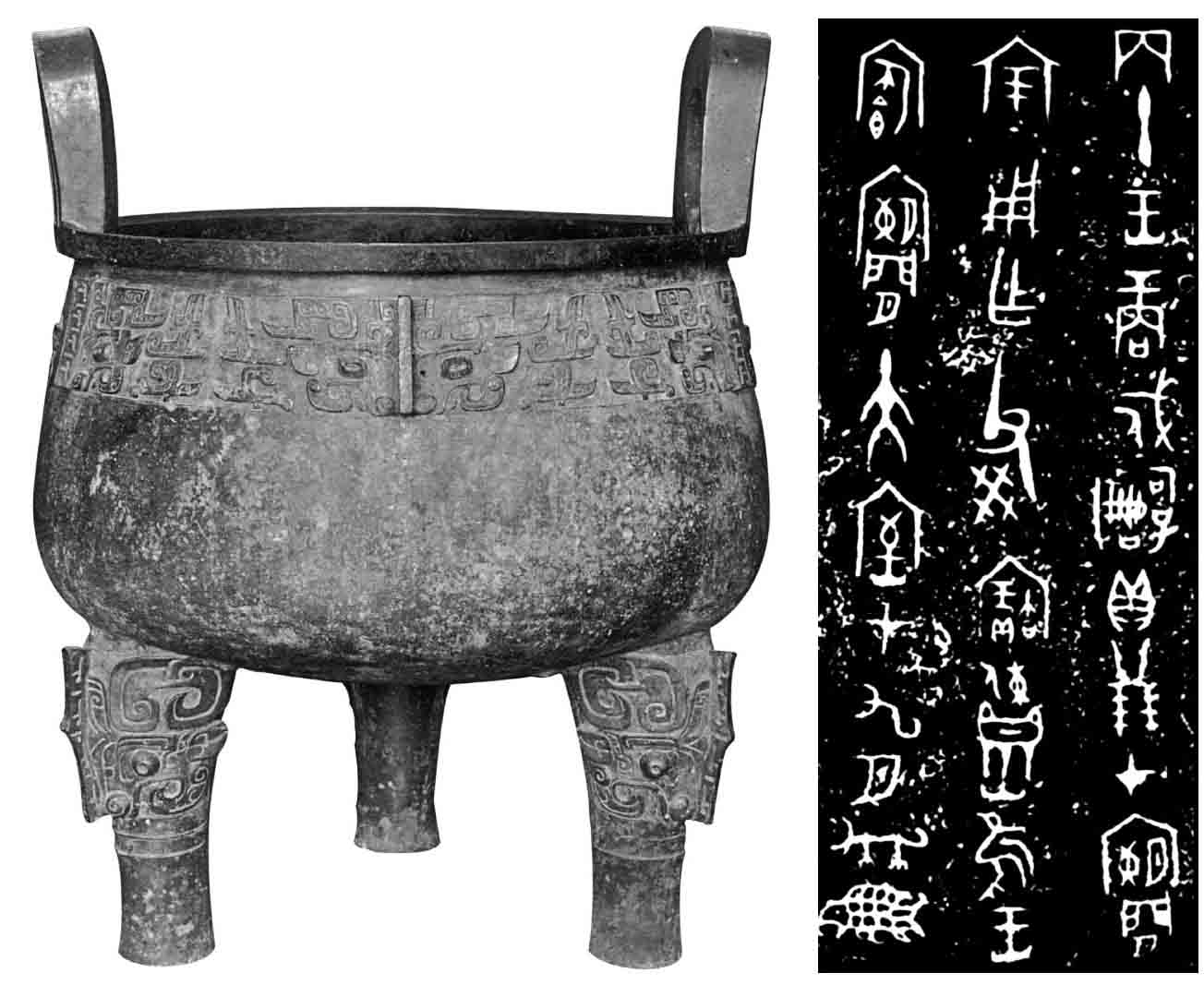
Shu Si Zi Ding and its inscription
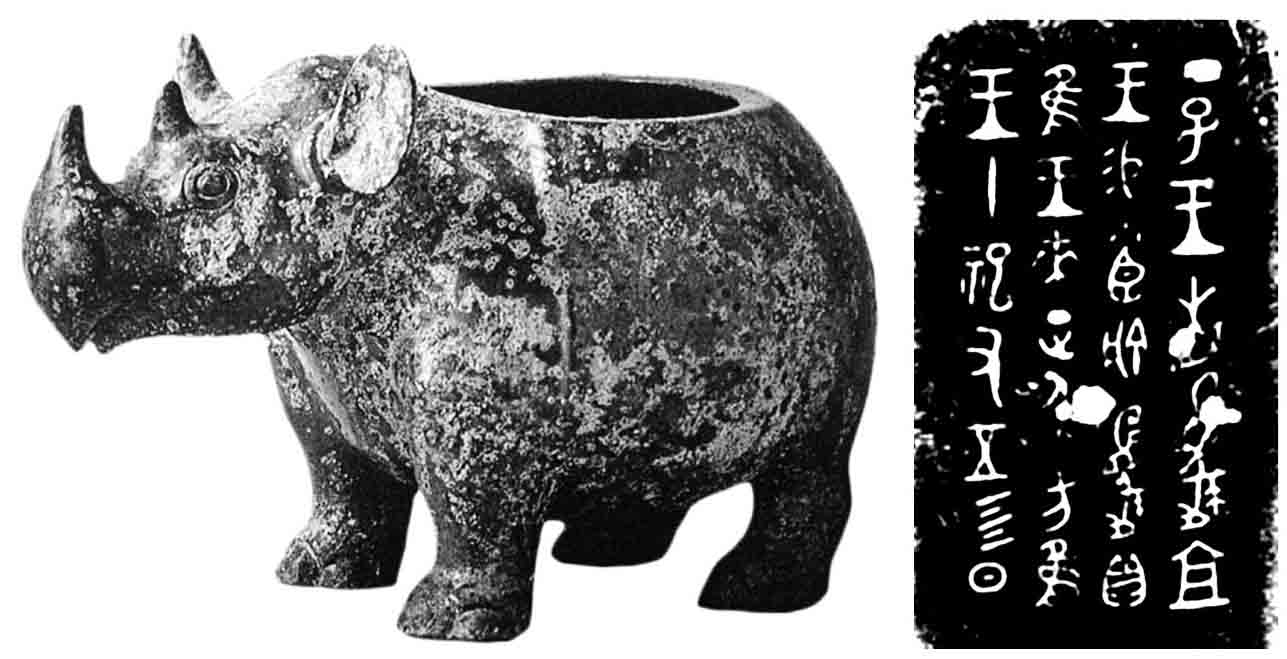
Xiao Chen Yu Xizun and his inscription
The interpretation of the word after the first "夒" in the above-quoted inscription is controversial among experts. The author once argued that it is a mediocre word. [22]The whole inscription roughly reads: On Dingsi day, the king of Shang inspected the city of Kuidi; Sacrifice day. The inscription reflects that the king of Shang inspected the city of Kuidi on his way back from conquering the barbarians in fifteen years, and rewarded the young minister Yu Kuidi who accompanied him in the expedition.
Servant Ma You. The place and time of excavation are unknown. Acquired by Xi'an Cultural Relics Store. The you are 35 centimeters high; the cross-section of the abdomen is elliptical, and the maximum diameter of the abdomen is 24 centimeters; the diameter of the ring foot is 17 centimeters. The left and right span beams are decorated with Kui patterns, and there are sheep's heads with draped horns at the end of the beams. There is a melon-shaped button in the middle of the lid and a high lid edge. Its inscription reads:
On Renyin, Zhouzi said: "Pu Ma, I give you silk and bag shells, and scorn you." Wang Xiu and his two friends. Used as father Xin Zun. book. Ge Beidan. ("Near Out" 604)
In the past, this artifact was always considered to be a Western Zhou artifact. Later, Li Xueqin demonstrated and pointed out that it was an artifact of the late Shang Dynasty. [23] is quite true. "Zhouzi" in the inscription is the king of the state. The general meaning of the inscription is: On the day of Renyin (Pu Ma came to the state), Zhou Zi said: "Pu Ma, I will give you silk and bag shells to encourage you." (Pu Ma returned to the Shang Dynasty) The king of Shang also The gold given to the second friend; the servant Ma used it as the honor of his father Xin. The servant Ma here should be the envoy of the king of Shang; he received the order of the king of Shang to go to the state, and the son of the state rewarded him with items; when he returned to the capital of Shang, he was rewarded by the king of Shang.
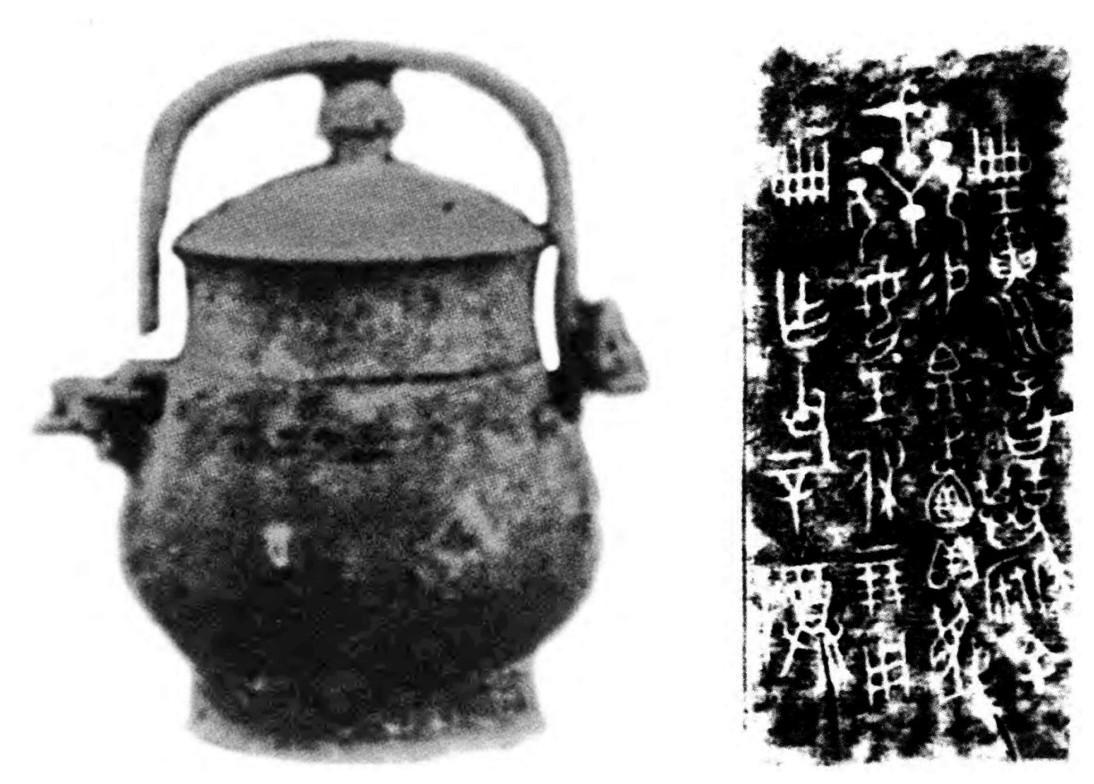
The shape of the hemp pot and its inscription
It's like a book. "Shuowen Jiezi" said: "The beetle is the largest turtle, so the word is from the Yuan, and the Yuan is big." It crawls like a book, protruding its head, exposing its four legs, and turning its tail to the left; its left shoulder and carapace are embedded in four arrows, of which two are on the left of the carapace, one is on the right rear, and the other is embedded in the carapace. Slanted upward on the left side of the turtle's neck.
The utensils are 10 cm high, 21.4 cm long, 16 cm wide and weigh 1.6056 kg. This is an artifact from the late Shang Dynasty. It was collected by the National Museum of China in 2003 and is housed in the museum.
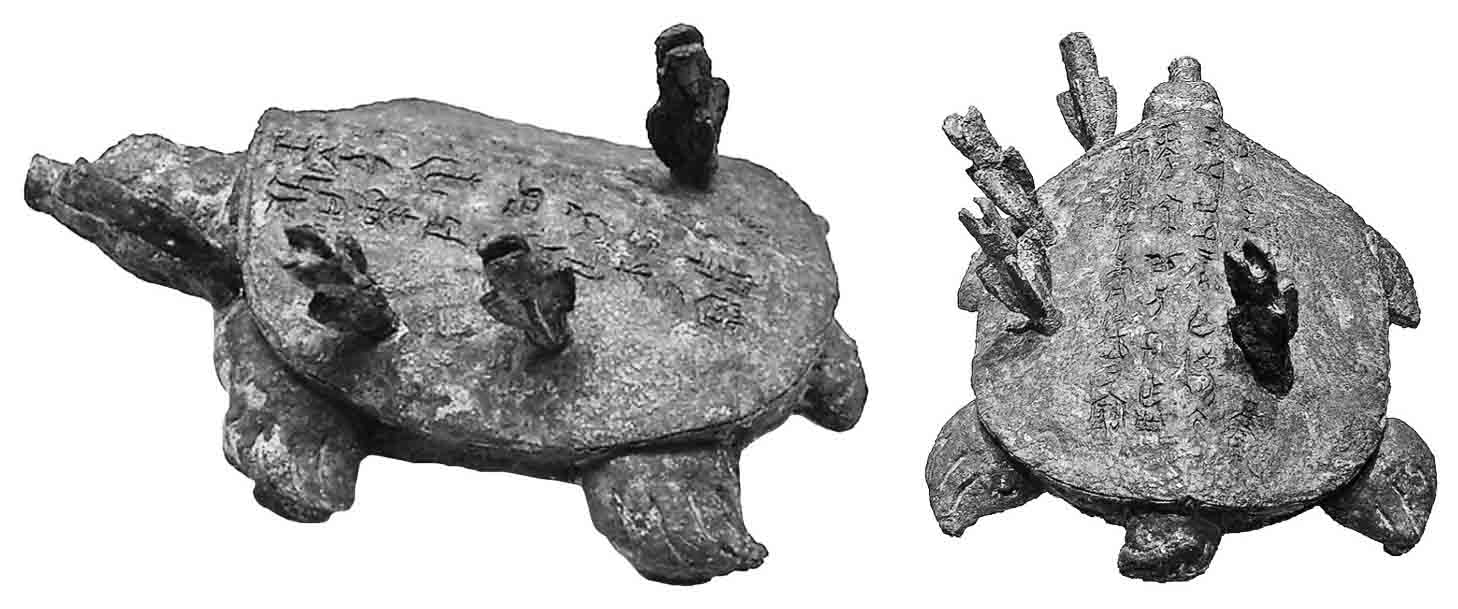
A book-like overhead shot and side shot of a turtle
There is an inscription of 33 characters in four lines cast on the back of the book, which reads:
Bingshen, Wang Yu Huan, won. Wang Yishe,
Yu Huan, won. Wang Yishe, Shoot three times, the rate is dead (no) and the arrow is discarded. Wang Ling (order) (sleep) brother Kui (kui) wrote a book, saying: "Zu Yuyong, as a daughter (ru) treasure".
Shoot three times, the rate is dead (no) and the arrow is discarded. Wang Ling (order) (sleep) brother Kui (kui) wrote a book, saying: "Zu Yuyong, as a daughter (ru) treasure".
The main meaning of the inscription is: On Bingshen Day, Wang arrived at Huanshui and obtained this turtle. The king shot one arrow first, and then shot three arrows in a row, all of which hit without wasting the arrow. Wang ordered Jingkui to give this turtle to Zuo Chuan, and the king said: "(Remember this) in the mediocrity, as your treasure."[24]This artifact reflects the archery of the Shang Dynasty. important artifacts.
The minister is a you. Forty centimeters high, with the same name on the cover. The Xiaochen family was once lost overseas, but it reappeared in the market in 2010. With the support of the Shanghai Municipal Government, the Shanghai Museum spent a huge sum of money to acquire this artifact. Its inscription reads:
Wang Ci Xiaochen Department. Give it to bed. Used as Zu Yizun. . ("Integration" 5378, 5379)
. ("Integration" 5378, 5379)

The shape, rubbings and inscriptions of the Xiaochen family vessel (collected from the Internet)
Sleeping, ancestral temple, in the oracle, there is "Xinsi, Zhen: It was just in Zuyi's sleeping" ("Tunnan" 1050), Zuyi's sleeping is Zuyi's ancestral temple. The inscription on the Xiaochenshi You to the effect that the King of Shang rewarded the Xiaochenshi in the ancestral temple, and the Xiaochenshi cast a statue for Zuyi. This inscription is an important historical material for the study of ministers and sacrifices in the Shang Dynasty.
Articles are uploaded by users and are for non-commercial browsing only. Posted by: Lomu, please indicate the source: https://www.daogebangong.com/en/articles/detail/Why%20are%20the%20characters%20of%20the%20Shang%20Dynasty%20called%20golden%20characters%20It%20turned%20out%20to%20be%20related%20to%20bronze%20wares.html

 支付宝扫一扫
支付宝扫一扫 
评论列表(196条)
测试